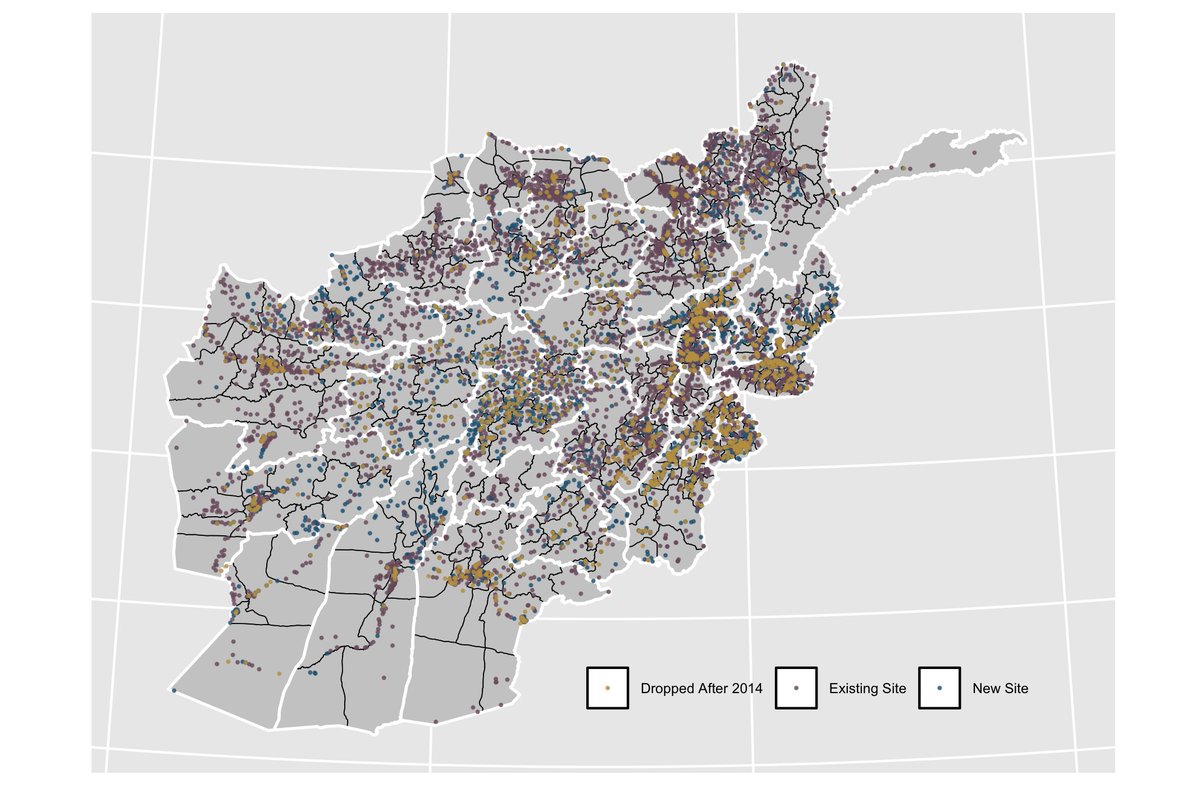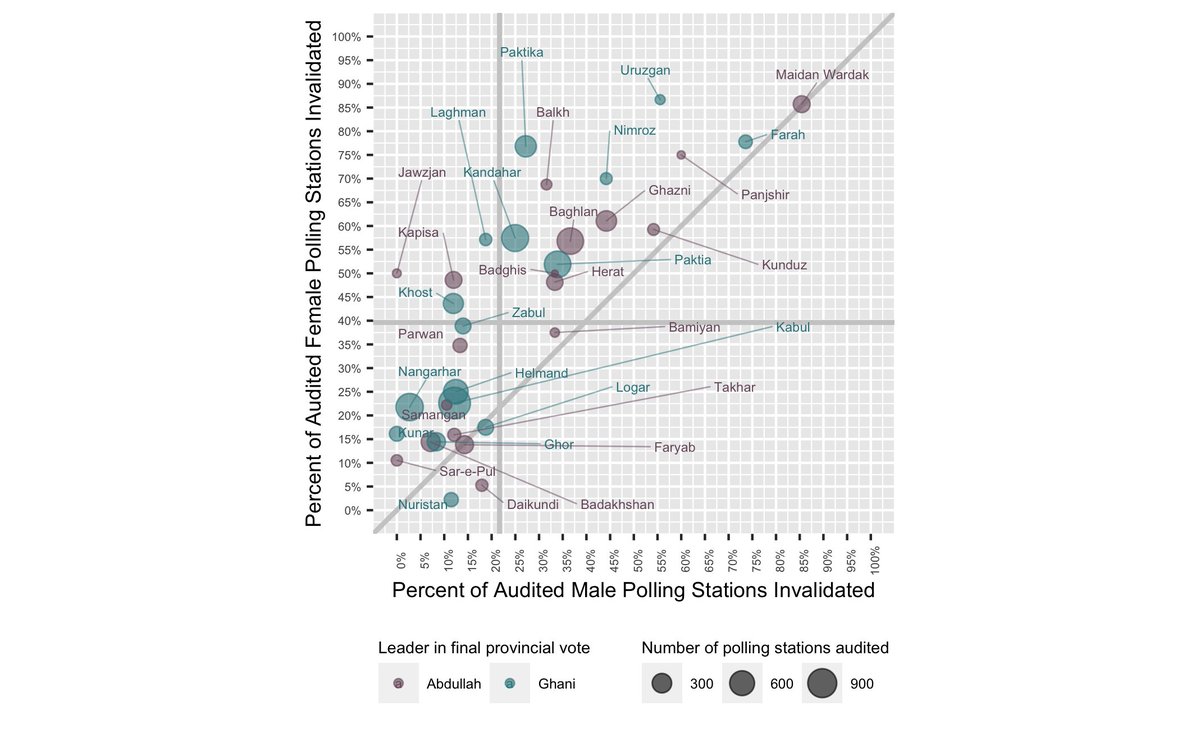NEW PAPER: Today @USIP published a new report from me analyzing the 2019 Afghan presidential elections:
https://www.usip.org/publications/2020/08/assessing-afghanistans-2019-presidential-election
This">https://www.usip.org/publicati... draws on (and makes some updates to) the public electoral dataset I released earlier when results were first announced: https://twitter.com/colincookman/status/1209869229152964608">https://twitter.com/colincook...
https://www.usip.org/publications/2020/08/assessing-afghanistans-2019-presidential-election
This">https://www.usip.org/publicati... draws on (and makes some updates to) the public electoral dataset I released earlier when results were first announced: https://twitter.com/colincookman/status/1209869229152964608">https://twitter.com/colincook...
The report focuses on three aspects of the elections: looking at how access to the voting process was constrained, attempting to understand the adjudication of disputes over the results, and looking at geographic and political trends compared to the 2018 and 2014 elections.
Worsening security, polling center closures, tighter voter registration requirements, and modest campaign mobilization efforts all combined to produce an outcome that suggests public participation in the 2019 election fell to the lowest levels observed in the past 15 years.
Using a combination of methods, I was able to match 2014 polling centers to 2018-19 polling centers, allowing me to identify which centers were closed or newly created for 2018-19, and to compare changes in candidate performance at the center level.
Most pre-election closures were concentrated in areas that previously supported Ghani in 2014, although most election-day closures were in areas that had supported Abdullah. The pre-election day closures had previously provided about a third of all valid votes in the 2014 runoff.
I also used 2018-19 polling center coordinates to calculate Voronoi diagram catchment areas for each polling center, and used @WorldPopProject population distribution estimates to estimate the voter registration rates in these catchment areas.
Substantial portions of the Afghan public have no access to elections and must instead either find other mechanisms through which to advance their interests, or seek to remain separate from the control of a state that cannot seek their formal political consent through the ballot.
The report also goes through the dispute over biometric vote records. As I reported at the time, there are some clear discrepancies in the biometric vote data released by IEC, including at least 611 polling stations that reported *increases* in votes following the first audit.
The report also finds that female polling stations that were audited were invalidated at a higher rate than male polling stations that were audited — maybe a triumph of fraud control, maybe evidence that biometric requirements limited valid female votes, I can& #39;t say which.
In terms of political trends, the 2019 election saw the continued growing over-representation of the provincial capital districts in the potential (registered) and actual (final valid votes) electorate - these are ~32% of the population, 35% of the registry, and 41.4% of the vote
As the election ended up repeating the two-person Ghani-Abdullah contest from 2014, Dostum& #39;s vote bloc in Jawzjan, Faryab, and Takhar was the only major flip, which is probably why he& #39;s the only Abdullah supporter recognized by name in the power-sharing agreement reached in May.
The 2019 presidential election also saw the lowest share of votes for second tier candidates of any presidential election since 2004. Had those candidates turned out more voters nationwide—increasing the total vote denominator—Ghani might have been denied a margin over 50%.
An underlying source of the war in Afghanistan is the disconnect between the formal political system and the distribution of power and other sources of legitimacy available to actors who lose out under the formal rules but retain the capability to exercise vetoes through force.
The electoral system is not accepted as the exclusive or even primary means for apportioning decision-making power in Afghanistan, but it is important to understand the decisions that structure the formal competition, and hopefully this report contributes to that understanding.
There is much more in the report (and more analysis that I hope to be able to highlight in the near future) but I& #39;ll invite you to read it for yourself here: https://www.usip.org/publications/2020/08/assessing-afghanistans-2019-presidential-election">https://www.usip.org/publicati...
or check out the underlying dataset here: https://github.com/colincookman/afghanistan_presidential_election_2019">https://github.com/colincook...
or check out the underlying dataset here: https://github.com/colincookman/afghanistan_presidential_election_2019">https://github.com/colincook...
Any errors here are mine but my thanks especially go to the USIP publications team, the reviewers who shared feedback on earlier drafts, and the observer sources who helped supplement the public data I was otherwise able to gather from the IEC and other sources. Comments welcome.

 Read on Twitter
Read on Twitter





